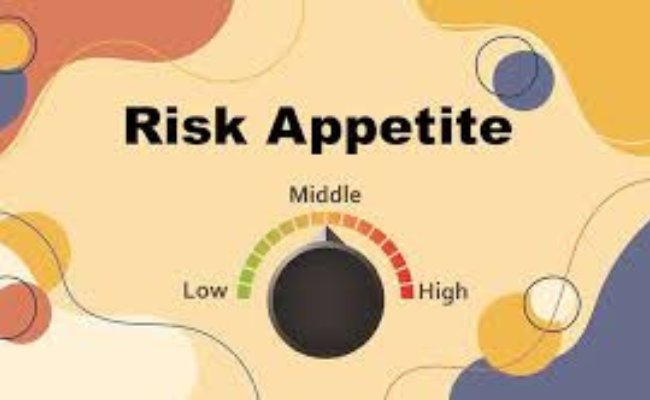
Introduction
Risk appetite is a critical concept in risk management, referring to the amount and type of risk that an organization is willing to accept in pursuit of its objectives. It is a fundamental aspect of strategic decision-making, as it defines the boundaries within which the company operates. Understanding and managing risk appetite helps ensure that the organization takes on appropriate levels of risk to achieve its goals without compromising its stability and reputation.
Concept and Importance of Risk Appetite
Risk appetite is essentially the organization’s risk tolerance, aligned with its strategic goals and business model. It is influenced by various factors, including the company’s financial strength, regulatory environment, market conditions, and stakeholder expectations. Properly defining and managing risk appetite is crucial for maintaining a balance between risk and reward, ensuring sustainable growth, and protecting the organization’s interests.
Key Components of Risk Appetite
- Strategic Objectives: Clear understanding of the company’s goals and how much risk it is willing to take to achieve them.
- Risk Capacity: The maximum amount of risk the organization can absorb without jeopardizing its stability.
- Risk Tolerance: The acceptable level of variation in performance relative to the company’s objectives.
- Risk Limits: Specific boundaries set to control risk exposure, such as financial limits, operational thresholds, and compliance boundaries.
- Risk Governance: Policies, procedures, and structures in place to manage and monitor risk appetite, ensuring alignment with the company’s strategy.
Importance of Managing Risk Appetite
- Alignment with Strategy: Ensures that risk-taking is aligned with the company’s strategic goals.
- Enhanced Decision-Making: Provides a framework for making informed decisions about risk-taking.
- Regulatory Compliance: Helps meet regulatory requirements related to risk management.
- Financial Stability: Protects the company’s financial health by preventing excessive risk-taking.
- Stakeholder Confidence: Builds trust with stakeholders by demonstrating responsible risk management practices.
Real-Life Scenario: Risk Appetite at GreenTech Innovations
Background
GreenTech Innovations, a leading renewable energy company, embarked on an ambitious project to develop a large-scale offshore wind farm. The project involved significant financial investment and operational challenges, exposing the company to various risks, including technological, regulatory, financial, and environmental risks. To navigate these challenges, GreenTech needed to clearly define and manage its risk appetite.
Incident Description
- Strategic Objectives: GreenTech’s goal was to expand its renewable energy portfolio and become a market leader in offshore wind energy. This required taking on substantial financial and operational risks.
- Risk Capacity: The company assessed its financial strength and determined that it could allocate up to 20% of its capital to high-risk projects without endangering its overall stability.
- Risk Tolerance: GreenTech set specific performance targets, such as maintaining a minimum return on investment (ROI) of 10% and limiting cost overruns to 5% of the project budget.
- Risk Limits: The company established risk limits, including a cap on project-related debt and a requirement for all major suppliers to meet stringent environmental and safety standards.
- Risk Governance: GreenTech implemented robust governance structures, including a risk management committee responsible for monitoring risk exposure and ensuring compliance with risk limits.
Consequences
By clearly defining its risk appetite, GreenTech was able to:
- Strategic Alignment: Align its risk-taking activities with its strategic goal of leading the renewable energy market.
- Informed Decision-Making: Make informed decisions about project investments, balancing potential rewards with acceptable risks.
- Regulatory Compliance: Ensure compliance with environmental and safety regulations, avoiding legal penalties and reputational damage.
- Financial Health: Protect its financial stability by maintaining a balanced risk portfolio.
- Stakeholder Trust: Build confidence among investors, customers, and regulators by demonstrating a responsible approach to risk management.
Post-Incident Response and Improvements
Following the successful completion of the wind farm project, GreenTech took several steps to further enhance its risk appetite framework:
- Continuous Review: Regularly reviewed and updated its risk appetite statements to reflect changing market conditions and strategic priorities.
- Enhanced Risk Assessment: Improved its risk assessment processes to better identify and quantify emerging risks.
- Stakeholder Engagement: Increased engagement with stakeholders to ensure that its risk appetite aligns with their expectations and concerns.
- Risk Culture: Fostered a strong risk management culture across the organization, emphasizing the importance of adhering to defined risk limits and governance structures.
Summary
The case of GreenTech Innovations illustrates the critical role of risk appetite in managing complex projects and achieving strategic objectives. By clearly defining and managing its risk appetite, GreenTech was able to navigate significant risks, protect its financial stability, and build stakeholder trust.
Lessons Learned
- Align Risk Appetite with Strategy: Ensure that risk-taking activities are closely aligned with the company’s strategic goals.
- Assess Risk Capacity: Regularly assess the organization’s capacity to absorb risk without compromising its stability.
- Set Clear Risk Limits: Establish specific risk limits to control exposure and guide decision-making.
- Implement Strong Governance: Develop robust governance structures to monitor and enforce adherence to the defined risk appetite.
- Foster a Risk-Aware Culture: Promote a culture of risk awareness and responsibility throughout the organization.
By understanding and implementing effective risk appetite practices, companies can better navigate uncertainties, make informed decisions, and achieve sustainable growth.


